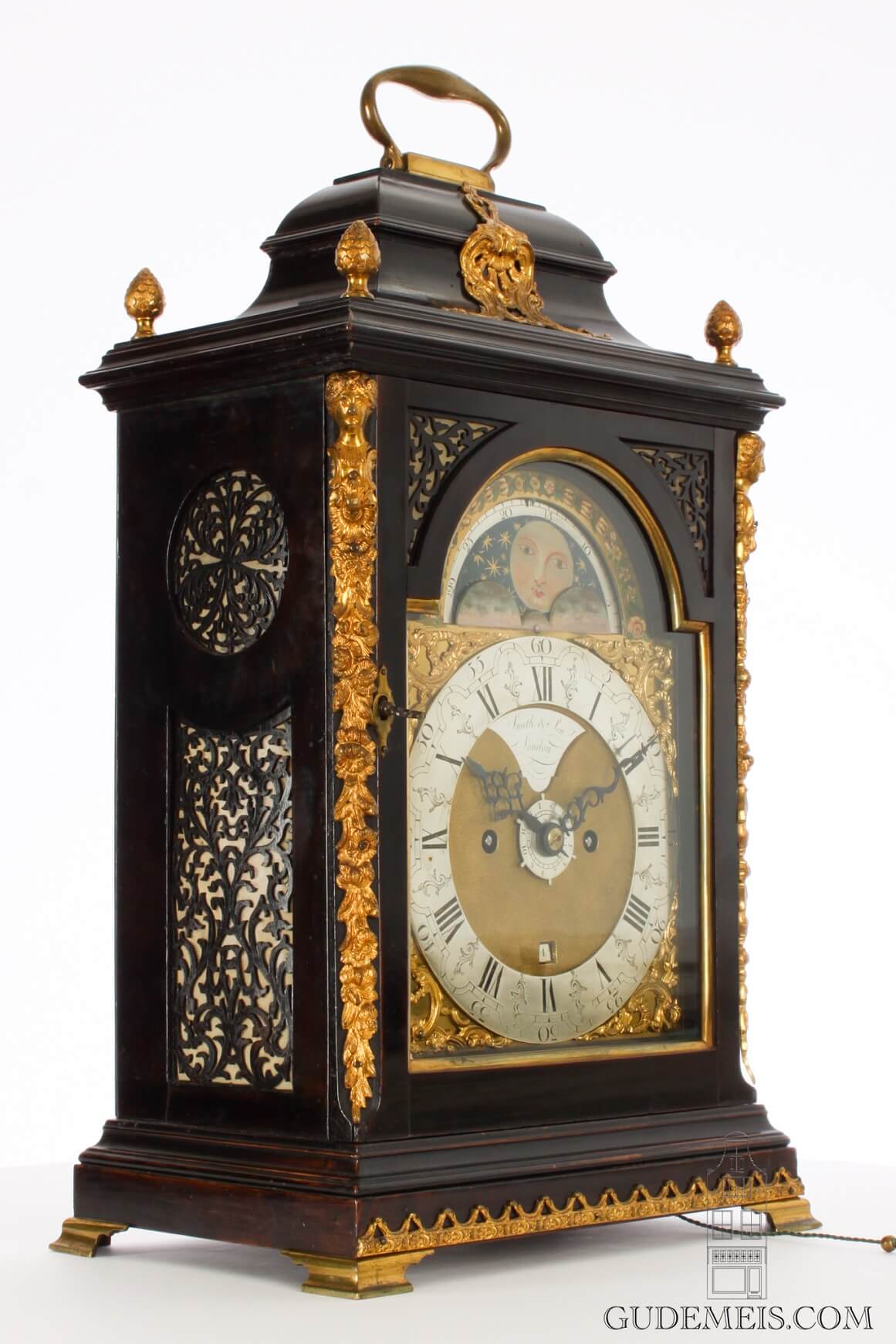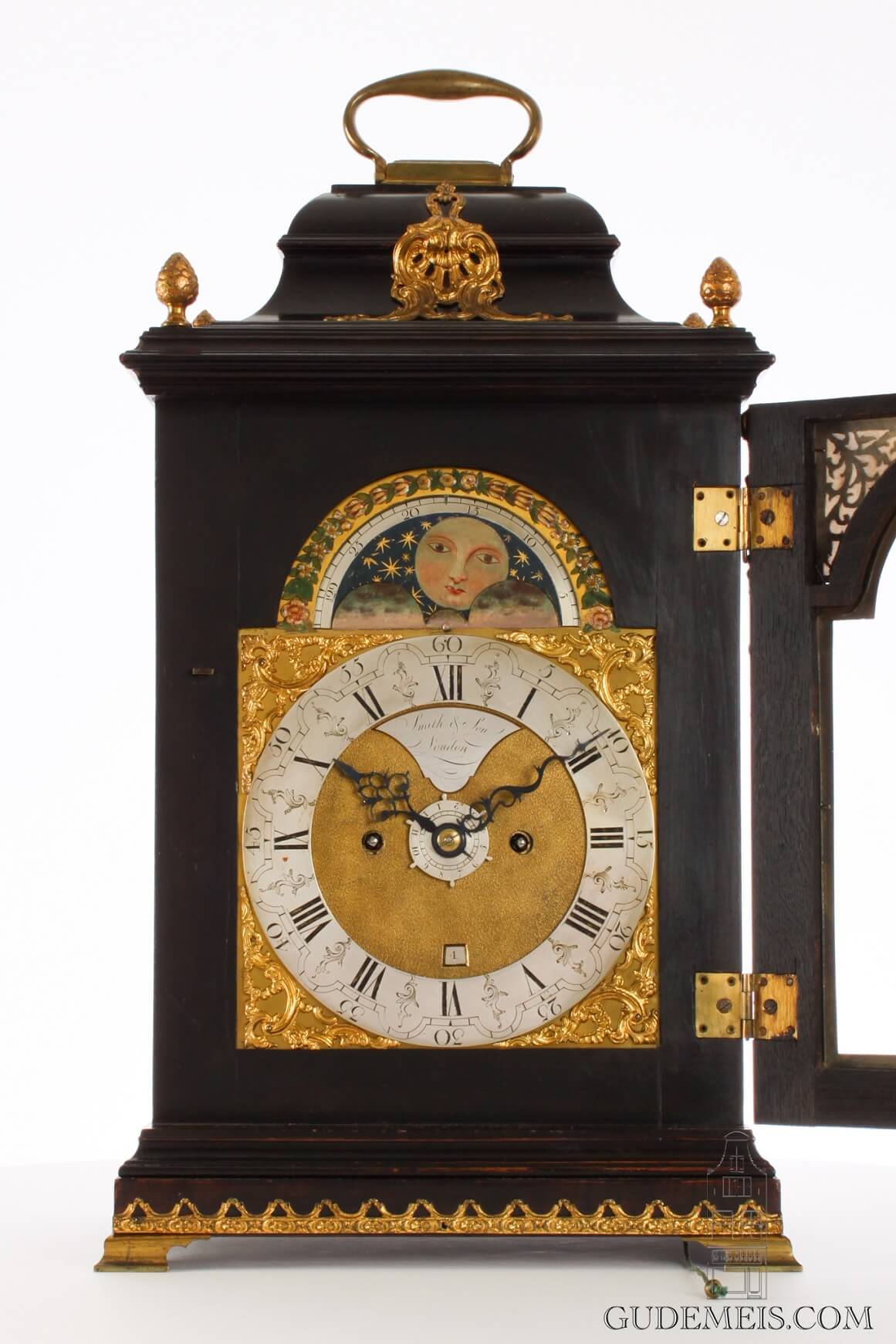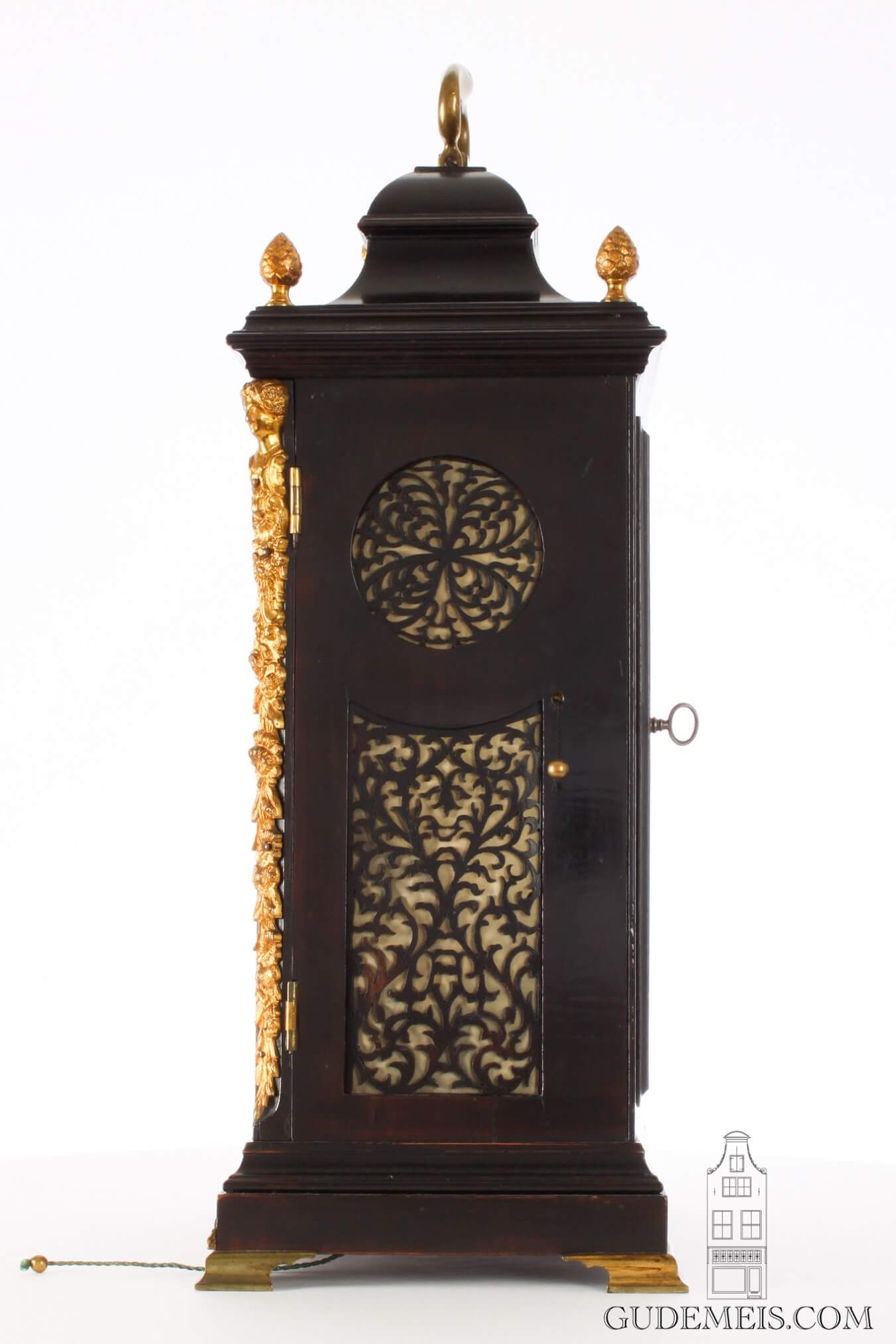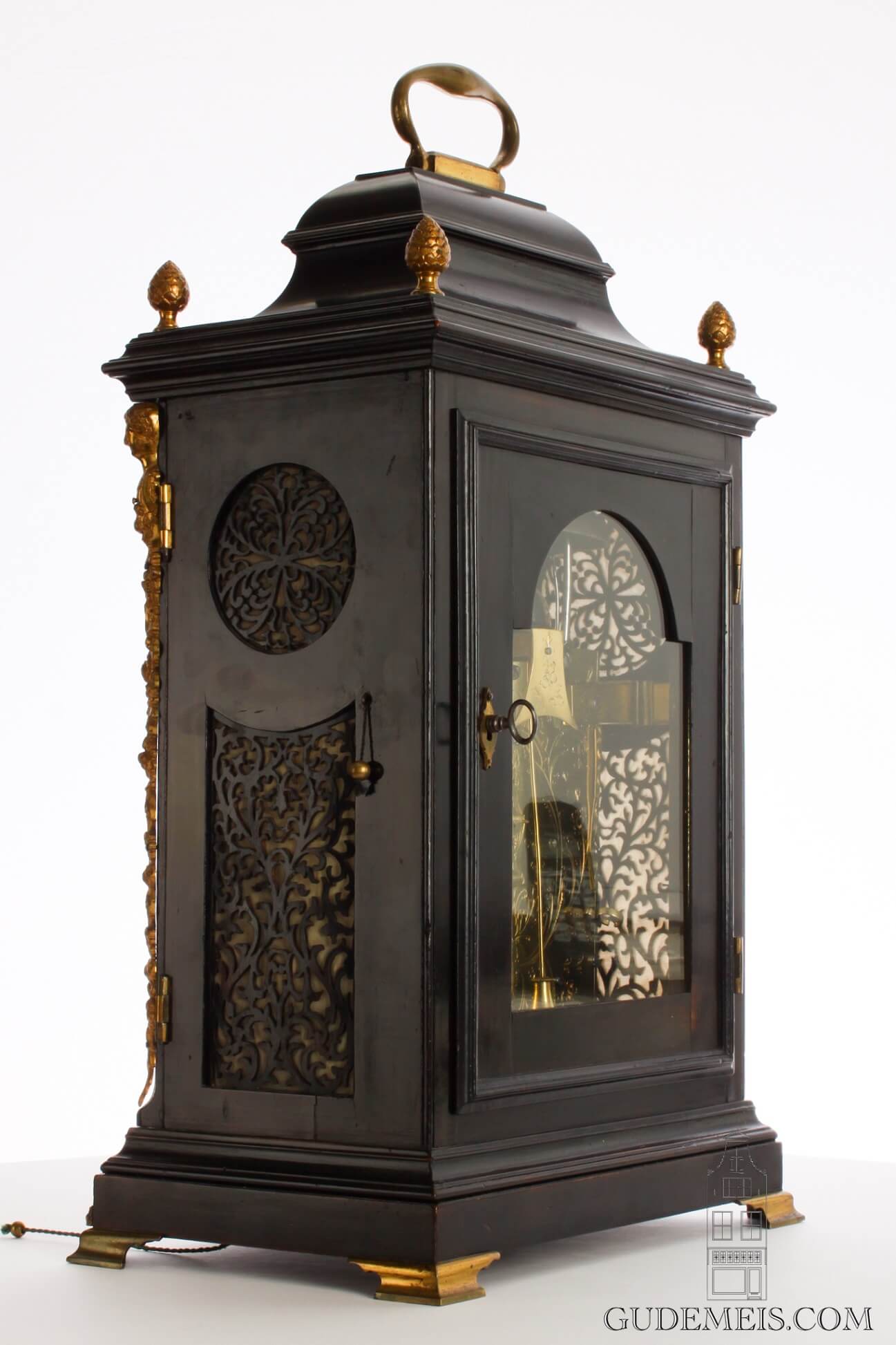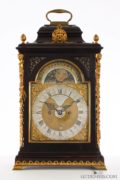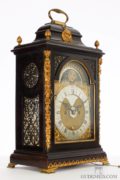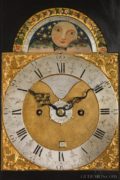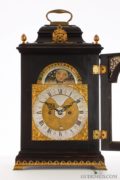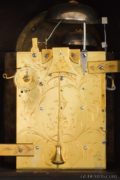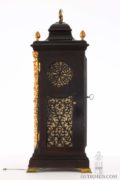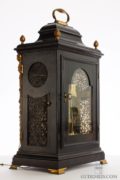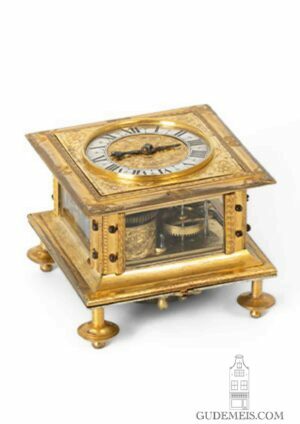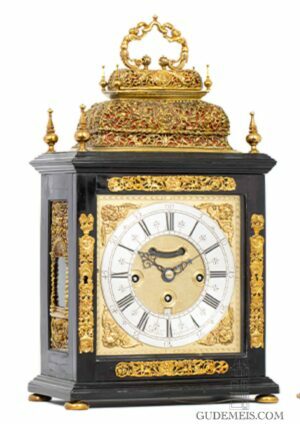An English ebonized table clock with date and moonphase for the Dutch market, Smith & Son, circa 1770.
Description
The dial
The 17.5-cm arched brass dial has an applied engraved and silvered chapter ring with Roman numerals and five-miute arches. The corners have rococo spandrels. The matted centre has an aperture for date and a recessed signature plaque signed Smith & Son London. In the arch which is lined with polychrome enamel flowers, there is the moonphase with indication of the mooncycle. The foliate pierced hands are made of blued steel and the alarm disc of engraved and silvered brass.
The movement
The movement has a beautifully engraved back plate with a classical urn surrounded by scrolls. It is being driven by two spring barrels which gut and fusee. It is of eight day duration. The rate is controlled by verge escapement in combination with a fixed pendulum. The clock has Dutch half hour rack striking on two alternating bells. The last hour that has struck will be repeated when pulling the repetition cord. The movement also has an alarm with pull winding on an auxiliary spring barrel.
The case
The ebonised wooden case has a true bell top with a rococo ornament surmounted by a brass handle and four berry finials. The case is throughout adorned with finely cut mouldings. The front door has a brass lined glass panel and brass herm and trailing flower corner mounts. The sides have foliate pierced wooden frets. The moulded plinth is raised on brass bracket feet.
The provenance
Vehmeyer Collection. This clock is depicted and described in; H.M. Vehmeyer ‘Clocks, their origin and development 1320 – 1880 Volume II pp. 684-685.

